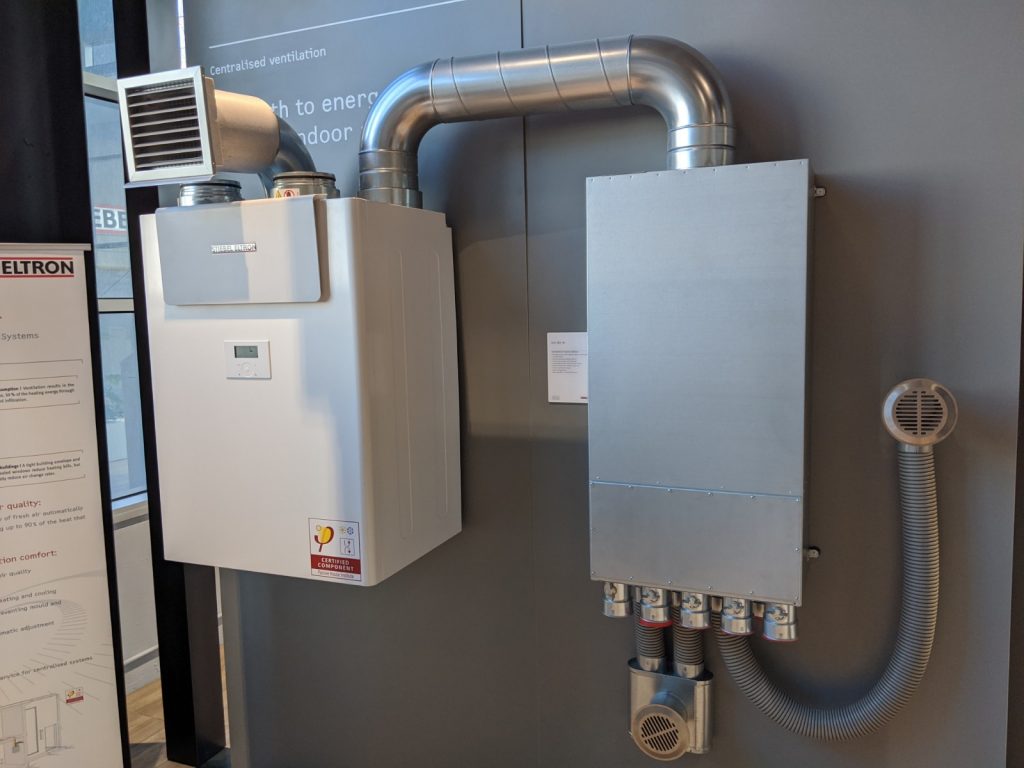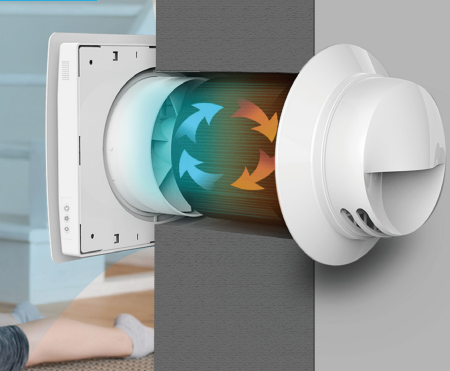How HRV Enhances Indoor Air Quality and Better Breathing
Wiki Article
Exactly How Heat Recovery Ventilation Boosts Indoor Air Quality and Reduces Power Expenses
Heat Recovery Ventilation (HRV) systems play an essential role in enhancing interior air high quality while concurrently lowering energy expenditures. By efficiently trading stale indoor air with fresh exterior air, HRVs assist maintain ideal moisture and minimize pollutants. Furthermore, their capacity to recuperate heat from outbound air decreases the strain on home heating and cooling down systems. As energy expenses continue to increase, understanding the complete potential of HRV systems ends up being increasingly essential for homeowners and organizations alike.Recognizing Heat Recovery Ventilation Systems

Heat recovery ventilation (HRV) systems play a necessary role in enhancing indoor air top quality, particularly in modern, energy-efficient buildings. These systems are designed to transfer warm from the outbound stagnant air to the inbound fresh air, therefore minimizing energy loss while maintaining excellent temperature levels indoors. HRVs contain a warm exchanger, followers, and ductwork, facilitating the continual circulation of air. By expelling interior toxins and presenting fresh air, HRVs aid to balance humidity levels, avoid mold and mildew development, and minimize allergens. The performance of HRV systems exists in their ability to recover as much as 80% of the heat from the tired air, promoting power conservation while ensuring a healthy and balanced interior environment. Their integration is crucial in attaining lasting living methods.
The Importance of Indoor Air High Quality
Indoor air quality (IAQ) is a critical aspect affecting the wellness and well-being of passengers in any environment. Poor IAQ can bring about numerous wellness issues, including respiratory problems, allergic reactions, and fatigue. Furthermore, it can worsen existing problems such as asthma. Aspects adding to reduced IAQ include contaminants from indoor sources like cleaning up representatives, mold, and insufficient air flow. As a result, preserving good IAQ is important for advertising a risk-free and comfy living or working room. Efficient methods to enhance IAQ entail normal monitoring of air quality, correct ventilation systems, and lessening the usage of hazardous substances inside your home. By prioritizing IAQ, individuals can ensure a much healthier environment that fosters productivity and general high quality of life.Energy Efficiency Benefits of HRV Equipments
Numerous homeowners and building managers are progressively identifying the energy efficiency benefits of heat recovery ventilation (HRV) systems. By transferring warm from tired interior air to incoming fresh air, HRV systems markedly reduce the power required for cooling and heating. This procedure lessens dependence on typical HVAC systems, resulting in lower energy expenses. Furthermore, HRVs aid maintain a balanced indoor environment, protecting against excessive heating or cooling needs. The capability to recover up to 90% of the heat from outbound air also supports sustainability efforts by minimizing general this article power consumption. Consequently, HRV systems contribute not just to cost savings however likewise to a minimized carbon impact, straightening with the expanding focus on energy-efficient structure techniques.Installation and Maintenance Considerations
The effective application of warmth healing air flow (HRV) systems needs mindful consideration of installment and upkeep factors to guarantee peak efficiency. Correct positioning of the HRV device is vital, as it should be set up in a place that optimizes airflow while reducing sound interruption. Additionally, ductwork should be properly sized and protected to prevent energy loss. Routine upkeep, including filter substitute and system cleaning, is crucial to protect optimum functionality and indoor air quality. Proprietors ought to develop a normal maintenance schedule to recognize and deal with potential issues prior to they rise. Partnership with seasoned specialists during both installment and maintenance phases can enhance the long life and performance of HRV systems, eventually resulting in much better interior environments and reduced energy costs.
Real-World Applications and Success Stories
Discovering real-world applications of heat recuperation ventilation (HRV) systems reveals their substantial effect on interior air top quality and power performance throughout various settings. In property structures, property owners have actually reported improved air high quality, causing fewer allergic reactions and respiratory system concerns. Schools applying HRV systems have actually kept in mind boosted pupil focus and minimized absenteeism because of better ventilation. Commercial structures, such as workplaces and retail rooms, have actually experienced reduced energy costs and enhanced staff member performance. For example, a corporate workplace in a pleasant climate achieved a 30% reduction in power costs after mounting an HRV system. These success stories show that HRV modern technology not only adds to healthier settings yet likewise gives concrete financial advantages, making it an important investment for various industries.Often Asked Questions
Can HRV Solutions Minimize Allergens in Indoor Air?
The effectiveness of HRV systems in lowering interior irritants mostly depends upon their capacity to filter and exchange air. HRV Heat Recovery Ventilation. By constantly replacing stale air, these systems can substantially decrease allergen levels throughout indoor environments
Just How Does Moisture Affect HRV System Performance?
Moisture considerably influences HRV system efficiency; high levels can lead more to condensation, lowering effectiveness, while low moisture may enhance air exchange. Stabilizing humidity is essential for excellent operation and keeping indoor air quality.Are HRV Solutions Noisy During Procedure?
HRV systems can produce differing noise degrees during operation, relying on their style and installment. Some systems operate quietly, while others might produce noticeable noise, especially at greater airflow settings or when inadequately maintained.What Is the Ordinary Life-span of an HRV System?

Can HRV Equipments Be Made Use Of in All Climates?
HRV systems can be made use of in various environments, however their efficiency may vary - HRV Heat Recovery Ventilation. In severe temperature levels, modifications or supplementary systems could be necessary to guarantee perfect performance and comfort while keeping indoor air qualityReport this wiki page